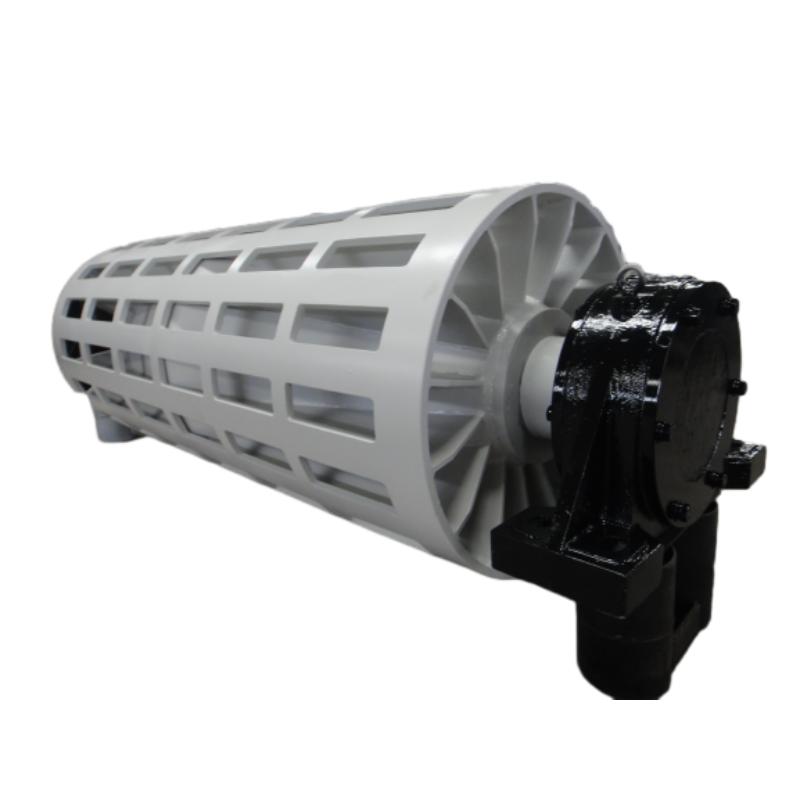Belt Conveyor Pulley | Heavy-Duty, Custom, Lagged Options
Heavy-Duty Slagging Pulley: A Field Guide from the Conveyor Trench
If your plant moves bulk material, you already know the humble belt conveyor pulley quietly decides your uptime. The heavy-duty Slagging Pulley is a niche variant, designed to clean slag and stubborn carryback from the belt’s non-working surface—especially on wide belts under heavy load. I’ve seen crews fight buildup for days; a proper slagging drum turns that into routine maintenance, not a shutdown.

What it is and why it matters
The Slagging Pulley (Heavy Duty) uses a fully welded steel plate drum to resist impact and scrape off sticky materials—coke fines, iron ore dust, wet limestone, even biomass tar. It slots into conveyors with wide belts, heavy loads, and high capacity where carryback is both safety and efficiency risk. Many customers say it seems simple, but switching to a purpose-built slagging unit cut cleanup time by half. Frankly, not shocked.
Industry trends I’m seeing
- Higher-capacity belts (2,000–10,000 t/h) with tougher contamination control requirements.
- Shift toward balance-verified drums (ISO 1940-1) to tame vibration and bearing wear.
- Sustainability push: longer service life, rebuildable hubs, and recyclable lagging.
- More plants adopting condition-based monitoring—vibration and temp sensors on pulleys.
Key specifications (real-world use may vary)
| Item | Slagging Pulley (Heavy Duty) | Notes |
|---|---|---|
| Drum material | Welded steel plate (Q235/ASTM A36 or higher) | Impact-resistant, rebuildable |
| Diameter | Ø315–1,250 mm ≈ | Custom on request |
| Face width | 500–2,000 mm ≈ | Wide-belt ready |
| Lagging | Ceramic or rubber, 8–20 mm | Ceramic for severe carryback |
| Weld standard | AWS D1.1 / ISO 15614 | NDT on critical seams |
| Balance grade | ISO 1940-1 G6.3 (typ.) | Lower is smoother |
| Service life | ≈ 40,000–60,000 h | Depends on loading & alignment |

Process, testing, and compliance
Manufactured in East Outer Ring Road, Yanshan County, Cangzhou, Hebei, China, drums are rolled, seam-welded, stress-relieved, then dynamically balanced. Methods include submerged-arc welding, CNC machining of hubs/keys, and precision lagging application. Testing: UT/MT on welds, runout ≤0.3 mm at rim, balance per ISO 1940-1, bearing L10h per ISO 281, vibration to ISO 10816. Conveyors are referenced against CEMA and DIN 22101/GB/T 10595 for integration. To be honest, that balance certificate is the one I always ask for.
Typical test snapshots: hardness 60±5 Shore A (rubber) or ceramic >9 Mohs; coating 80–120 μm DFT; salt spray 240 h (ASTM B117) for painted units. Surprisingly durable in coastal plants.
Applications and advantages
- Steel mills, coking, mining prep plants, ports, cement, power (wet ash), biomass.
- Reduces carryback, belt mistracking, and fugitive dust—better housekeeping, fewer slips.
- Protects idlers and return pulleys by knocking off sticky fines.
- Pairs nicely with belt conveyor pulley scrapers for near-zero buildup.
Vendor comparison (field-notes level)
| Criteria | RaoHua Slagging Pulley | Generic Import | Local Fabricator |
|---|---|---|---|
| Balance cert | ISO 1940-1 G6.3 provided | Sometimes G16 ≈ | Varies; request proof |
| Weld QA | NDT on critical seams | Spot checks only | Depends on shop |
| Lagging options | Ceramic/rubber, grooved | Rubber only ≈ | Custom, longer lead |
| Lead time | 2–4 weeks (typ.) | 1–6 weeks | 3–8 weeks |
Customization and integration
Options include shaft/hub sizes, taper-lock or welded hubs, ceramic tiles for aggressive scrubbing, crown or flat face, and special coatings for corrosion. For an existing belt conveyor pulley train, check take-up travel, belt wrap angle, scraper compatibility, and frame clearances. I guess a quick 2D GA drawing exchange upfront saves days later.

Mini case study
A northern port (iron ore) swapped a return drum for a Slagging Pulley with ceramic lagging. Carryback cleanup dropped ≈45%, belt mistracking events fell from weekly to monthly, and idler replacement intervals stretched from 9 to 14 months. Not magic—just better control of sticky fines. Maintenance crew was, honestly, relieved.
Final thought: specify the balance grade, weld standard, and lagging type in your PO. Your belt conveyor pulley line will thank you.
References
- CEMA: Belt Conveyors for Bulk Materials, 7th Ed.
- DIN 22101: Continuous conveyors – Belt conveyors for loose bulk materials.
- ISO 1940-1: Mechanical vibration – Balance quality requirements.
- AWS D1.1: Structural Welding Code – Steel.
- GB/T 10595-2009: Belt conveyors for bulk materials (China).
- ISO 281: Rolling bearings – Dynamic load ratings and rating life.
- ASTM B117: Standard Practice for Operating Salt Spray Apparatus.
-
Impact Roller for Belt Conveyor – Durable Solutions for IndustryNewsNov.24,2025
-
Rubber Conveyor Rollers – Quiet, Durable, Sealed BearingsNewsNov.24,2025
-
Industrial Conveyor Belt Rollers: Durable Solutions for Harsh EnvironmentsNewsNov.24,2025
-
Idler Rollers for Belt Conveyors | Durable, Low-Noise OEMNewsNov.24,2025
-
Durable Rubber Conveyor Belt Rollers for Industrial UseNewsNov.24,2025
-
Ceramic Lagging Conveyor Pulley – Anti-Slip, Wear-ResistantNewsNov.17,2025






























